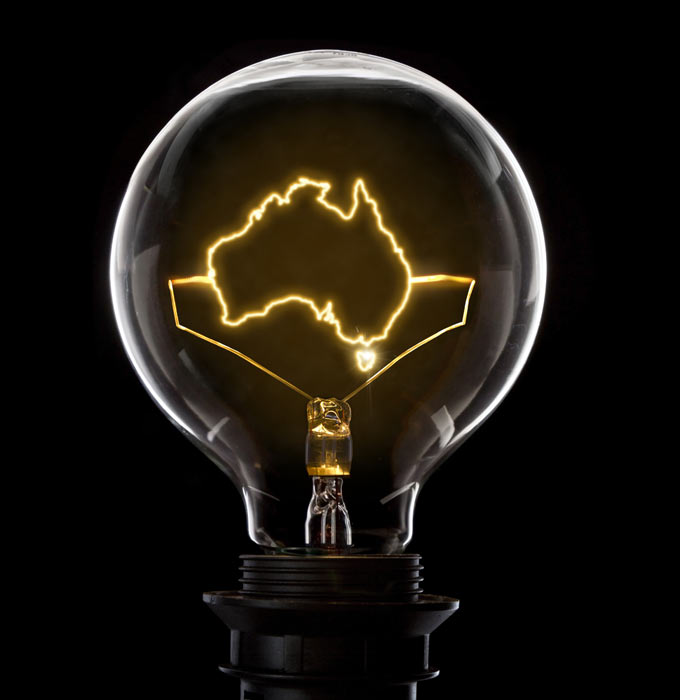Did the Finkel Review go far enough?
The energy security debate reached a tipping point following the release of the Finkel Report. But do the report’s recommendations actually provide us with anything new to work with? Here’s a look into the report’s recommendations, industry responses, and why it might not be such a revolutionary document.

Australia’s Chief Scientist Alan Finkel handed down the final report for the Independent Review into the Future Security of the National Electricity Market, also known as the Finkel Report, on 9 June 2017. His recommendations for the future of Australia’s energy supply and security focused on the country generating power from low emissions technologies, such as renewables and gas.
Finkel’s recommendations
The report produced 50 recommendations covering Australia’s energy security, future reliability, rewarding consumers, and lowering emissions. One of these recommendations was a Clean Energy Target, where electricity companies must have a set percentage of power supplied by low emissions technology. The report, however, does not specify what this target should be.
Other recommendations included electricity generators being required to give three years notice of closure; the development of a NEM-wide integrated grid plan to inform future investment decisions; a new Energy Security Board; rewarding consumers for demand management; and governments encouraging safe gas exploration and production, among others.
From a power generation point of view, continuing to move to low emissions technology has the potential to benefit companies within many sectors, including those who are involved in building solar and wind farms, gas fired power stations and the associated gas infrastructure to produce and transport that gas, as well as the electrical transmission and distribution infrastructure involved with these developments.
How the industry responded
In April 2017 the Government announced that it would consider introducing an Australian Domestic Gas and Security Mechanism (ADGSM), which would require LNG projects that are drawing gas from the domestic market to either limit their exports or find new gas sources, to give the domestic market priority access to gas before it is exported.
After the Finkel Report was released, the Government decided that it would implement the ADGSM, and in late July the then Minister for Resources and Northern Australia, Matt Canavan, issued a notification of his intention to consider whether 2018 will be a domestic shortfall year.
At the 12th COAG Energy Council Meeting in July, Australian energy ministers agreed to implement all but one recommendation of the Finkel Report. They were undecided on the implementation of a Clean Energy Target.
Following the report’s release, the Australian Pipelines and Gas Association (APGA) welcomed the recommendations, in particular, the emphasis they had on the key role of gas in the move to lower emissions.
APGA Chief Executive, Peter Greenwood, said, “As Dr Finkel points out, we need a long-term reliable supply of gas to achieve the dual goals of emissions reduction and energy security.”
Australian Petroleum Production and Exploration Association (APPEA) Chief Executive, Dr Malcolm Roberts, also welcomed the report’s recommendations, saying, “The best option today to cut emissions is to use more gas-fired power generation.
“As the review confirms, gas can complement the intermittent nature of renewable power generation and produce electricity with one-third to one-half lower emissions than coal.
“We support Dr Finkel’s call for an orderly transition within the electricity sector as renewables make up an increasing share of the energy mix.”
However, APGA and APPEA were disappointed that in response to the review energy ministers put forward reforms to pipeline operations, such as information disclosure and commercial arbitration, as well as more foreshadowed pipeline regulation.
Is this anything new in the energy debate?
According to Fergal Convery, Business Development Manager at Powered, an Australian energy and resource focused business development company, the Finkel Report is not revolutionary, as it explores ideas that the industry has discussed for years, including gas already being a well-known transition fuel between coal and renewables, and the idea of a Clean Energy Target has already been in place through the Mandatory Renewable Energy Target (MRET) for many years in Australia.
Powered works with innovative resource-based service companies in the energy, and oil and gas industries, providing them with project and collaboration opportunities, as well as support entering the Australian market. It’s this on-the-ground knowledge that allows Mr Convery to see how the industry should be moving forward.
“The final report of the independent Finkel review is by no means a silver bullet for the Australian energy industry and consumers. However it does go some way to address the key issue that needs to be considered, which is how to balance the national electricity grid and market with the reduced use of coal and the sharp increase of renewables,” Mr Convery said.
“We need to be considering affordable domestic gas supply co-existing with the new LNG export market, which is difficult, when new gas projects are not even being considered in almost half of Australian states. If gas is the transition and balancing fuel, and Australia has both significant gas export and limited new gas field development, the future looks bleak in terms of reliability and consumer cost of energy.”
While governments and industry are still debating the best way to implement the Finkel Report’s recommendations, and put in place a clear plan for Australia’s future energy security, Mr Convery said energy service companies should be doing what they can to ensure their own offerings and operations are innovating with the changing energy landscape.
“At a business and industry level, what suppliers and construction companies can be doing, and what Powered’s clients are doing, is bringing cost-saving, innovative and efficient practices and ideas to Australian energy companies to ensure that the industry is working as efficiently as possible,” Mr Convery said.


